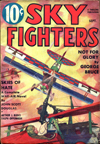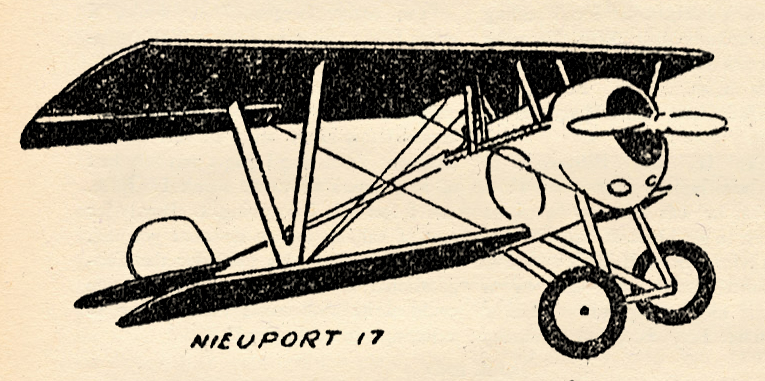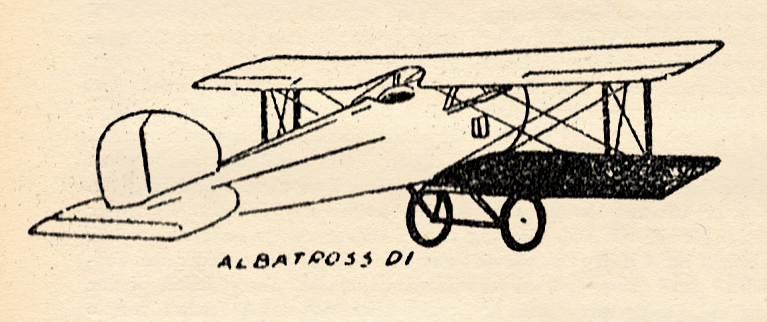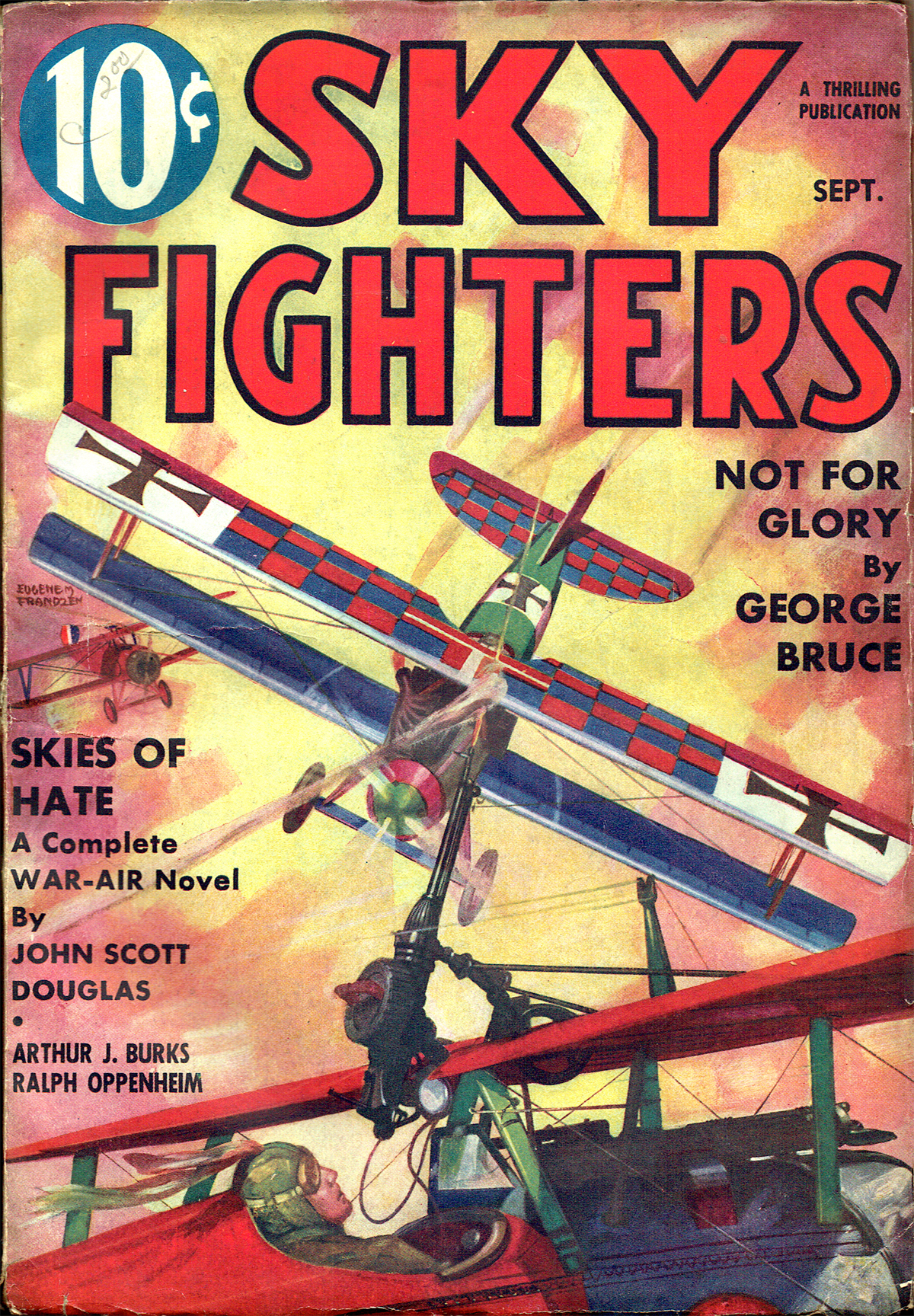“Sky Fighters, September 1935″ by Eugene M. Frandzen
Eugene M. Frandzen painted the covers of Sky Fighters from its first issue in 1932 until he moved on from the pulps in 1939. At this point in the run, the covers were about the planes featured on the cover more than the story depicted. For the September 1935 cover, Mr. Frandzen features the Nieuport 17 taking on a Albatross D1!
The Ships on the Cover
PLANES kicked through the air at  the first of the war and were laughed at by the ground troops and their commanders. Toys, things to wonder at and possibly admire; but to be taken seriously as an offensive weapon. Never!
the first of the war and were laughed at by the ground troops and their commanders. Toys, things to wonder at and possibly admire; but to be taken seriously as an offensive weapon. Never!
Weapon? That’s exactly the right word that keys the whole advance of the airplane from a trick war sideline to a major cog in the wheels of war. On the Nieuport in the foreground the weapon blazing from the top wing is the Lewis gun with a revolving metal drum which fed shells into the gun breech. But let’s slide back to the first part of the war when machine-guns were not thought possible. In August, 1914, cavalry carbines were occasionally tucked into a cockpit and the observer or even a pilot of a single seater optimistically pushed the snout out over the side of the fuselage and took a pot shot at a Boche flying parallel to his plane. With the vibration from the engine, the bumpy air and the back pressure from the slipstream it was all the would-be assassin could do to hold the rifle from jerking out of his hands and barging back into the empennage, let alone draw a bead on the enemy who had ideas of his own about remaining in focus.

Bags of Bricks
Finding this method useless the sharpshooters of the air dragged out, believe it or not, good old bags of bricks. The trick was to get above your opponent, mentally calculate the trajectory of a brick from your shaking hand to the whirling prop of the enemy plane. Of course there was always the chance of ringing the bell by a super-lucky throw if the falling brick made direct contact with the enemy’s head. About the only casualty from this duck on the rock technique was a direct hit on a high official’s private cow. Orders went out immediately: No more bricks.
Small steel darts, diminutive bombs and hand grenades were hurled down at ground troops and supply trains but the damage was small. Then came the machine-gun firing from the back pit or from the front nacelle of the pusher type.
In January, 1915, the Lewis gun was first mounted on the top wing of a Nieuport firing over the top of the propeller in the line of flight. A few months later the Roland Garros gun appeared, shooting through the propeller arc, but not synchronized. Triangular steel plates deflected bullets that would otherwise have shattered the wooden propeller.

Finally the Fokker synchronized guns blazed a devastating hail of bullets through the prop arc. The Allied airmen were battered and smashed from the skies. Fast pusher type planes were thrown against the German’s super gun. And then a German plane crashed behind the Allied lines. The interrupter gear secret was out. Synchronized Vickers guns were mounted on Allied cowlings. The Germans’ advantage had been lost. The war in the skies blazed forth with accelerated tempo. Toy ships of a few months past had blossomed into major weapons of war.
An Old Stunt
However, the top gun firing forward was not discarded by many Allied aviators. Nieuports and S.E.5s used it, up until the Armistice. The Nieuport on the cover has its top gun and a synchronized Vickers which has jammed hopelessly. Only a few shells remain in the pancake drum above. The French pilot is wounded and attacked by two German Albatross D1s. He knows he cannot get them with front gun fire, but he remembers an old trick. Painfully he reaches up, yanks back the Lewis butt, jams the Bowden wire on the trigger as he zips under the belly of one German plane. A direct engine hit. Down goes the enemy. The remaining German sees the tricky gun work of the wounded Frenchman and feels the wind from the bullets of a second Nieuport coming to the rescue. He veers off and streaks for home allowing the Frenchman to get away, land and become a confirmed booster for the old top gun Lewis.

Sky Fighters, September 1935 by Eugene M. Frandzen
(The Ships on The Cover Page)





Good blog post !!!I am very glad that I find your regular post here. Which seems to be very important and it made good for me. I will always give a nice thrust look in to you from my bookmark feed. I don’t actually comment and don’t like to spend time in typing the comment
Comment by college paper writing service — February 27, 2018 @ 5:59 am